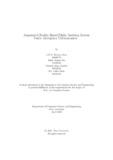| dc.contributor.advisor | Alam, Md. Ashraful | |
| dc.contributor.author | Islam, A.R.M. Rizwan | |
| dc.contributor.author | Era, Sadia Anjum | |
| dc.contributor.author | Joarder, Jubayed Islam | |
| dc.contributor.author | Islam, Md. Rafiu | |
| dc.date.accessioned | 2021-05-30T05:38:44Z | |
| dc.date.available | 2021-05-30T05:38:44Z | |
| dc.date.copyright | 2020 | |
| dc.date.issued | 2020-04 | |
| dc.identifier.other | ID: 16101075 | |
| dc.identifier.other | ID: 14241006 | |
| dc.identifier.other | ID: 19241034 | |
| dc.identifier.other | ID: 19241033 | |
| dc.identifier.uri | http://dspace.bracu.ac.bd/xmlui/handle/10361/14452 | |
| dc.description | This thesis is submitted in partial fulfillment of the requirements for the degree of Bachelor of Science in Computer Science and Engineering, 2020. | en_US |
| dc.description | Cataloged from PDF version of thesis. | |
| dc.description | Includes bibliographical references (pages 50-52). | |
| dc.description.abstract | The number of aerial vehicles have continuously increased as our technology advances
and will continue to increase. However, to fly any aerial vehicle manually, the
person should have a thorough understanding of GPS tracking and navigation, which
narrows the field. Furthermore, each type of aerial flights comes with its own set of
problems like civilian aircraft losing ATC control. Therefore, we propose a model
where we introduce augmented reality to assist the pilots and drone operators during
emergency situations by visualising the pathway they have to follow from source
to destination.Firstly, all GPS coordinates of the determined path are taken, these
are sampled where we take the coordinates after each appropriate distance from
one another. The checkpoints were placed in the Unity software by a GPS AR
plugin which allowed us to place them exactly in the gps coordinates taken. Then,by
breshman’s line drawing algorithm and Bezier’s Curve on 3D plane, we connected
the checkpoints by reference points, as well as generated path from diverted position
to original path whenever vehicle would move away from the determined path. In our
built app, when any compatible device able to use it is brought near the path, it will
show the direction to destination while in the path and a warning that it has moved
away from the path by how much in terms of latitude,longitude and altitude.Finally,
we tested our application in real life by taking gps readings from a number of flights
our drone took and applied it by placing smartphone supporting the application on
drone where it flew through the same paths, Thus, in our simulation we found that
our application has near desired outcome. | en_US |
| dc.description.statementofresponsibility | A.R.M. Rizwan Islam | |
| dc.description.statementofresponsibility | Sadia Anjum Era | |
| dc.description.statementofresponsibility | Jubayed Islam Joarder | |
| dc.description.statementofresponsibility | Md. Rafiu Islam | |
| dc.format.extent | 52 pages | |
| dc.language.iso | en_US | en_US |
| dc.publisher | Brac University | en_US |
| dc.rights | Brac University theses are protected by copyright. They may be viewed from this source for any purpose, but reproduction or distribution in any format is prohibited without written permission. | |
| dc.subject | GPS | en_US |
| dc.subject | Augmented Reality | en_US |
| dc.subject | Flight Assistance | en_US |
| dc.subject | Air Traffic Control ATC | en_US |
| dc.subject | Pathway Generation and Drone | en_US |
| dc.subject | Logistic Regression Analysis | en_US |
| dc.title | Augmented reality based flight assisting system under emergency circumstances | en_US |
| dc.type | Thesis | en_US |
| dc.contributor.department | Department of Computer Science and Engineering, Brac University | |
| dc.description.degree | B. Computer Science | |

